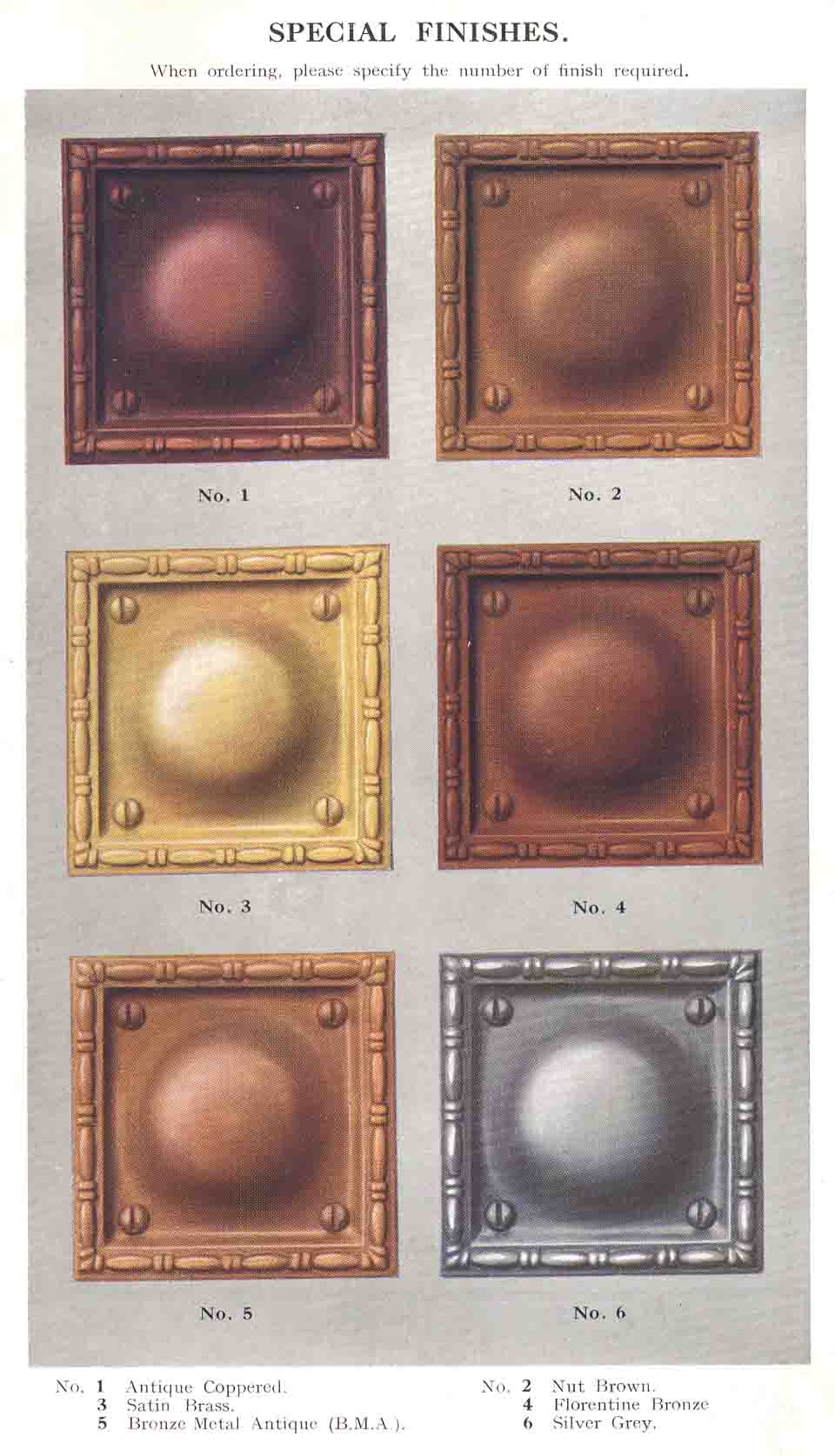Patina Finishes
(c) Antique Metalware Society
Small extracts can be used with acknowledgements to 'Oldcopper.org' website.
Helpful comments are very welcome.
Patina
Some owners like to see a patina on copper or brass, others like their treasures with a glowing deep polish that smiles back at them each time they are admired. It is difficult to generalise but feedback suggests that in the UK the general preference is for most items to be kept polished unless they are very old whereas in the USA there is a stronger preference to see a patina form on more recent items. This is perhaps the reverse of the situation with pewter where it is very rarely ever polished in the UK. The market for pre-patination on new items is also stronger in the USA.
A genuine patina will have been built up over many years and be much appreciated by many owners. As copper oxidises it also picks extra compounds up from the atmosphere in which it is exposed. These compounds give rise to the composition of the patina including carbonate and sulphide as well as a mixture of at least two of the three possible oxides of copper. Occasional waxing of the patina may also have improved its appearance.
Patinated brass products were offered by many manufacturers, giving a range of possible permanent finishes. They are produced by a chemical colouring treatment that is protected by a special durable lacquer. Most companies were very careful not to reveal the process used but commercial treatments are available from suppliers of metal finishing products.
Colour Descriptions
The following descriptions are included in the 1935 catalogue issued by W A Hudson & Sons. Other makers might differ.
Antique Copper (also Ant.Cop, A/C, Oxidised Copper and Ox Cop.)
A general term used to indicated a dull matt copper finish with areas of darker relief which give emphasis to parts of the product.
B.M.A. (Bronze Metal Antique)
A greeny fawn colour obtained by baking solid bronze metal in a damp atmosphere. The same colour can also be obtained by oxidising brass.
Bronzed or Oxidised
Vague terms when used commercially.
Copper Bronzed and Relieved (C. B. & R.)
A bright copper finish with dark or black shading.
Florentine (also Flor., Florentine Bronzed) .
A uniform chocolate colour.
Steel Oxidised (Steel Bronzed, Ox. Steel)
A uniform dark blue grey finish on brass, not to be confused with oxidising on steel.
A classic reference book summarising possible treatments was originally published by the Arts Council, London in 1981:
‘The Colouring, Bronzing and Patination of Metals’, R Hughes and M Rowe, Thames and Hudson, 2nd Edn. 1991, 372pp. ISBN 0 500 01501 5.
A manual for fine metalworkers, sculptors and designers. This describes hundreds of tested techniques for making surface finish colours, colour illustrations, 404 references.
Patinated brass products were offered by William Tonks & Co. The special colour page shown below was inserted in the front of their 1939 catalogue and shows finishes named:
(1) Antique Coppered, (2) Nut Brown, (3) Satin Brass, (4) Florentine Bronze, (5) Bronze Metal Antique (BMA) and (6) Silver Grey.

Illustration taken from Tonks catalogue loaned by Simon Clarke.
After